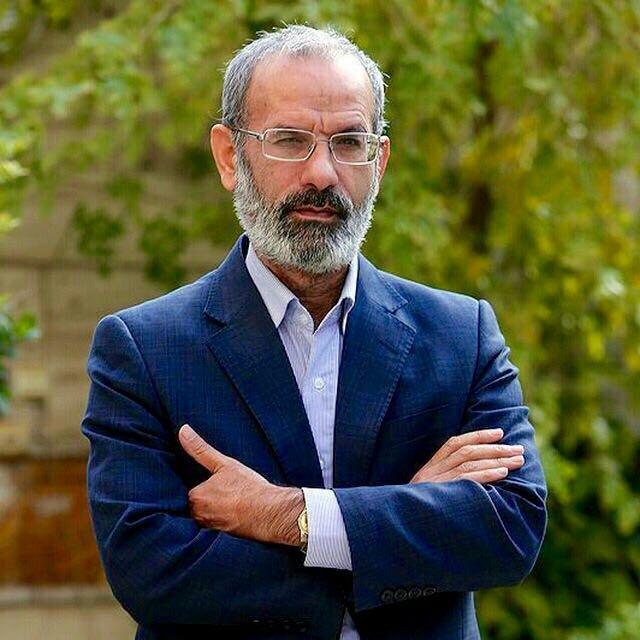The Syria connection to Iran, Afghanistan and China
by Pepe Escobar, The Saker:
 Iranian academic spells out Iran’s position in the Middle East and questions US policy toward the region; amid reports that the Qods force is unlikely to disband, and that Daesh (ISIS) is being moved the Afghanistan-Pakistan border
Iranian academic spells out Iran’s position in the Middle East and questions US policy toward the region; amid reports that the Qods force is unlikely to disband, and that Daesh (ISIS) is being moved the Afghanistan-Pakistan border
A crucial question has been consuming policymakers in Iran, Iraq, Syria and Lebanon: Does the Trump administration have a strategic plan for the Middle East or not?
Few are more apt to answer than Saadallah Zarei, dean of the Institute of Strategic Studies Andishe Sazan-e Noor in Tehran. Zarei, a soft-spoken, extremely discreet man I met in Mashhad a few days ago, happens to be not only one of Iran’s top strategic analysts but also a key brain behind the Islamic Revolutionary Guard Corps’ Qods Force commander Gen. Qasem Soleimani – the ultimate bête noire outside the Beltway.
So US strategists could do worse than paying attention to Zarei.
While the US “owns 37 fixed military bases and almost 70 movable bases in the Middle East”, Zarei said, “We do not observe specific and exact strategies.”
He stressed his perplexity with “contradictory behavior related to the Shi’ite population. America’s behavior in terms of the Shi’ite population of Bahrain and their rights, the Zaydi Shi’ite population in Yemen and Kashmir and also the Shi’ite population in Lebanon, which is 35% of the total population, is not specified and nobody knows how the Americans think about Shi’ites and how they act.”
Zarei also notes that “America does not have a specific policy about the democracies of Turkey and Iran. There is not any specific strategy about democracy in Iraq and Lebanon too. America talks about democracy as an American value and tries to generalize it, but in this region, we see that the best friends of the US are countries where there is no election in their political systems.”
The bottom line, according to Zarei, is that “the US strategy is not coherent in the Middle East. I think this is the main reason for the failure of American policies in this region.”
Enter the Hazaras
Now zoom in from the macro-analysis to the micro-view on the ground. Compare Zarei to Komeil, a 24-year-old Hazara Shi’ite from Kabul. Komeil is one among as many as 14,000 soldiers, all Hazara Afghans, carrying an Afghan passport, which made up the Liwa Fatemiyoun brigade fighting in Syria. We met in Mashhad, where he is spending Ramadan, before going back to the frontlines next month.
One of the key founders of Fatemiyoun, in 2013, was Abu Ahmad, killed by a missile, of unknown origin, near the Golan Heights, in 2015. At first, the brigade was a religious organization set up “to defend Shi’ite holy shrines in Syria” or, as Komeil prefers to stress, “defend humanity, weak people”.
No Fatemiyoun fighters carry Iranian passports – even though some, like Komeil, do live in eastern Iran; he’s been in Mashhad since 2011. Almost all of them are volunteers; Komeil followed “friends” who joined the brigade. He undertook military training in Bagram airbase when he was part of the Afghan Army.
Komeil told me he engaged in direct combat with an assortment of Salafi-jihadis – from Daesh and Jabhat al-Nusra to smaller outfits that were part of the vast, rambling Free Syrian Army umbrella. He’s been on the frontlines non-stop for three years, fighting mostly in “Sham and Zenaybi” near Damascus, and was also present at the liberation of Aleppo.
He described Daesh jihadis as “very difficult” in battle. He says he saw Daesh fighters wearing “American clothes” and carrying American-made rifles. Captured prisoners had “food from Saudi Arabia and Qatar”. He personally captured a “French lady working with Daesh” but did not know what happened to her, saying only that “Commanders treat our prisoners well.” He swears “less than 10%” of Daesh jihadis are Syrians – “There are Saudis, Uzbeks, Tajiks, Pakistanis, English, French and Germans.”
In contrast to the propaganda barrage across the Beltway, Komeil is adamant there are no Islamic Revolutionary Guard Corps (IRGC) military commanders active with Fatemiyoun, and no Hezbollah. They fight “side by side” – and the Iranians are essentially military advisers. He depicted Fatemiyoun as a totally independent outfit. This would indicate their military training was mostly acquired as members of the Afghan Army, and not via the IRGC.
Komeil said the fabled Qods Force commander Gen. Qasem Soleimani did visit the group, but “only once”. Each force is responsible for its own area of operations; Fatimiyoun; Hezbollah; the Syria Arab Army (SAA); the Pakistanis (“strong fighters”); the al-Defae-Watan, which he portrayed as an equivalent of the Iraqi Hashd al-Shaabi (also known as the “People Mobilization Units”); and the Medariyoun also from Iraq.


